We occasionally link to goods offered by vendors to help the reader find relevant products. Some of these may be affiliate based, meaning we earn small commissions (at no additional cost to you) if items are purchased. Here is more about what we do.
You have to admit, some of the old-style pressure canners are pretty impressive looking. And perhaps just a tad intimidating too…
Large wing-nuts clamp a lid to an enormous kettle while plumes of steam are jettisoned through a small pipe as a balancing weight jiggles… it’s all a touch “mad scientist-y,” isn’t it?

And every summer, kitchens around the globe are converted into laboratories for the cooking wizards who use this wonderful equipment for canning or bottling, stockpiles of delicious foods.
While these specialty pots may look a bit challenging, they’re actually not difficult to use at all. Putting up preserves with steam pressure is no more difficult than using a boiling water bath – or successfully using any other kitchen appliance.
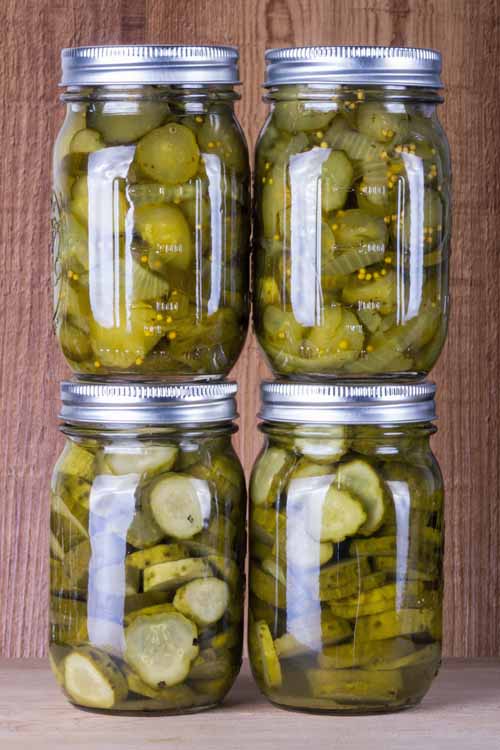
So if you’re new to the world of pressure canners, or would like a bit more information about why they’re so important for safely preserving low-acid foods and how they work, please read on.
We’ve also looked at what type of gear is required for using a pressure canner, and what features to look for if you’re in the market to buy a new one. And then we wrap up with reviews of five of the most popular pressure canners for online shoppers in today’s marketplace.
Already got great equipment, but in the market for some good techniques? Check out our home pressure canning tips and tricks.
Pressure Canning Know-How
- Bottom Line Up Front: Our #1 Picks
- Water Bath Vs Pressure Canning
- Preserving Low Acid Foods
- How Steam Pressure Makes Food Safe
- A Brief History of Pressure Canners
- How Pressure Canners Work
- Adjustments Above Sea Level
- Best Heat Sources
- Safety Tips
- Pressure Canners Vs Pressure Cookers
- Jars, Lids, and Labels
- A Review of Our Top Rated Picks
- Selecting and Preparing Food
- Other Gear That You May Need
- Additional Tips For Successful Canning
- Conclusion
Bottom Line Up Front: Foodal’s #1 Picks
 1. The All American. This is, unarguably, the the best pressure canner on the market. Made of solid chunks of cast aluminum, the tolerances are so tight that it doesn’t need a gasket to seal the lid to the base! The All American is heirloom quality and it a pot that your grandkids will still be using. Moreover, it’s the only model that’s still made in the USA!
1. The All American. This is, unarguably, the the best pressure canner on the market. Made of solid chunks of cast aluminum, the tolerances are so tight that it doesn’t need a gasket to seal the lid to the base! The All American is heirloom quality and it a pot that your grandkids will still be using. Moreover, it’s the only model that’s still made in the USA!
Read our complete review below OR check out the customer comments on Amazon.
 2. Presto. If you’re looking for a model that is lighter and safer to use on glass top ranges, then the Presto may fit the bill. Not only that, it’s light on the pocket book as well and is our budget pick. Made of spun aluminum rather than, cast, the Presto is much lighter than the equivalent sized All American offering.
2. Presto. If you’re looking for a model that is lighter and safer to use on glass top ranges, then the Presto may fit the bill. Not only that, it’s light on the pocket book as well and is our budget pick. Made of spun aluminum rather than, cast, the Presto is much lighter than the equivalent sized All American offering.
Read our complete review below OR check out the customer comments on Amazon.
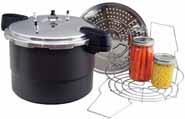 3. Granite Ware. Most notably known for their water bath canner and stockpot offerings, Granite Ware also makes a pressurized model. The anodized bottom portion is great for using the pot as a pressure cooker as well as canner. The anodizing ensures that the aluminum construction will not react with the food and tarnish either the pot or change the flavor or color of the ingredients.
3. Granite Ware. Most notably known for their water bath canner and stockpot offerings, Granite Ware also makes a pressurized model. The anodized bottom portion is great for using the pot as a pressure cooker as well as canner. The anodizing ensures that the aluminum construction will not react with the food and tarnish either the pot or change the flavor or color of the ingredients.
Read our complete review below OR check out the customer comments on Amazon.
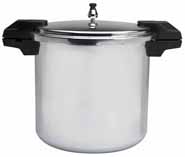 4. Mirro. This is another trusted name in home canning and their offerings are similar the the Presto in operation and hovers around the same price point. A great alternative that includes moderne weighted gauges, the only improvement would be better written directions for first timers entering into the home canning world.
4. Mirro. This is another trusted name in home canning and their offerings are similar the the Presto in operation and hovers around the same price point. A great alternative that includes moderne weighted gauges, the only improvement would be better written directions for first timers entering into the home canning world.
Read our complete review below OR check out the customer comments on Amazon.
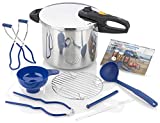 5. Zavor Duo. A great product for smaller batches, the Zavor Duo is really a pressure cooker first and the included kit converts it into canner by including racks and other accessories. This model is great for quickly sealing up small batches of preserves and salsas without lugging at a bigger model or heating up the kitchen. Also, this model is made of stainless steel which means that when you are using it a pressure cooker rather than a canner, the food will not react with the metal (as is the case with raw aluminum).
5. Zavor Duo. A great product for smaller batches, the Zavor Duo is really a pressure cooker first and the included kit converts it into canner by including racks and other accessories. This model is great for quickly sealing up small batches of preserves and salsas without lugging at a bigger model or heating up the kitchen. Also, this model is made of stainless steel which means that when you are using it a pressure cooker rather than a canner, the food will not react with the metal (as is the case with raw aluminum).
Read our complete review below OR check out the customer comments on Amazon.
Two Types of Food, Two Styles of Preserving
Many of us are familiar with the boiling water method for processing products like chutneys, jams, jellies, fruit butters, pickles, and so on.
Any berries or fruit that are naturally high in acid, or a recipe that included added vinegar, lemon juice, or citric acid, is considered “high-acid,” and therefore suitable for processing in a boiling-water bath. High-acid foods will have a pH level less than 4.6.
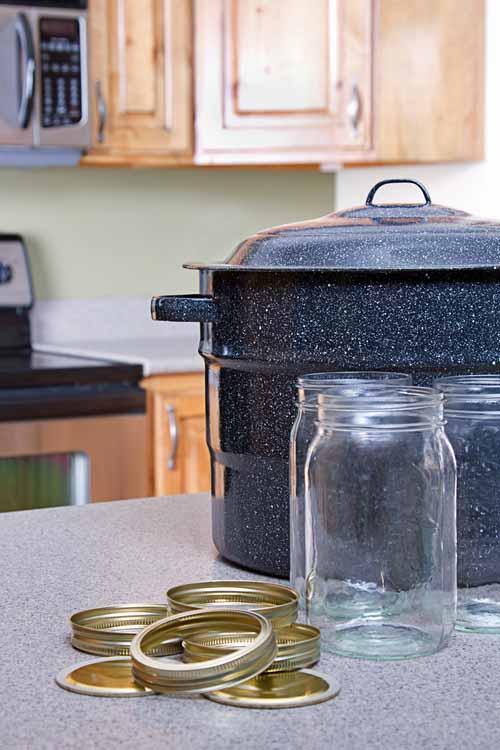
However, most vegetables and proteins such as fish, poultry, and meat are of a more alkaline nature and will require processing in a pressure canner – the only safe manner with which to process low-acid foods.
Return to the Table of Contents
Low-Acid Foods Need High Heat
All things in the natural world are exposed to a myriad of microorganisms on a constant basis. These include the items we usually like to preserve, such as fruits, berries, vegetables, meats, poultry, and seafood. And usually, their presence isn’t a problem.
But when it comes to food safety and our health, allowing these microorganisms to sit for extended periods of time will cause spoilage. And this can result in foodborne illnesses, with a range of symptoms from mild to potentially fatal.
Of the four main categories of microorganisms – enzymes, yeast, mold, and bacteria – bacteria is the hardest to kill, and requires the highest temperatures in processing.
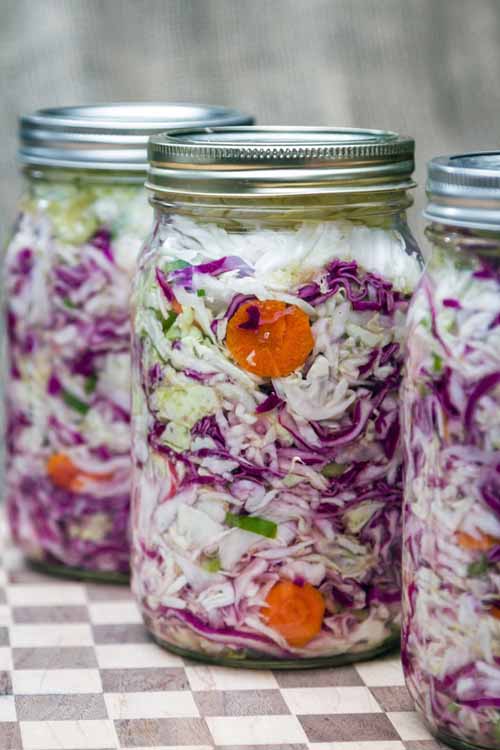
Canning inhibits the natural spoilage cycle by heating the ingredients to temperatures in the bacterial kill zone – a temperature at which most microorganisms can’t reproduce or survive.
And for some of the nastier bacteria, like Clostridium botulinum (the botulism bug), foods must be processed at temperatures higher than the boiling point of water.
Molds, yeast, and enzymes are all destroyed at temperatures below 212°F – the point at which water boils at sea level. But for bacteria such as C. botulinum, this isn’t hot enough to destroy its spores, the ones that produce the poisonous toxin that cause botulism.
Not only is C. botulinum not destroyed at 212°F, it thrives on low-acid foods in a moist environment with no oxygen, or a partial vacuum – and a sealed jar fits the description perfectly.
According to the USDA’s Complete Guide for Home Canning, for food safety all low-acid foods need to be sterilized at a temperature of 240-250°F. And, as these temperatures are considerably higher than that of boiling water, they must be achieved with steam heat.
Return to the Table of Contents
The Effectiveness of Steam
High temperatures sustained for a particular amount of time will destroy bacteria, including C. botulinum.
Again, according to the USDA’s Complete Guide, those high temperatures may only be achieved via pure steam, free of oxygen, at sea level – as produced when water is heated with pressure.

Pressure canners can achieve those temperatures when operated at 5–15 psgi (pounds per square inch of pressure as measured by gauge.) More often, you’ll find the pressure expressed in the more familiar acronym psi (i.e. pounds per square inch).
The precise processing time depends on what type of food is being processed, how it’s packed into the jars, and jar size as well – and will range from minutes to hours, with most low-acid foods in the 20-100 minutes’ range.
Return to the Table of Contents
Necessity is the Mother of Invention: A Quick History of Home Canning
Finding a safe method to extend the shelf life of food became serious business during the Napoleonic Wars (1803-1815), when the French government offered a handsome reward to anyone who could find a safe and cost effective way to preserve food.
In 1809, French brewer and confectioner Nicolas Appert developed a system for sealing food in glass jars, after observing how sealed food remained preserved unless a leakage occurred. Although it wasn’t understood at the time exactly how sealing foods in glass jars prevented spoilage, the basic idea was employed fairly successfully over the next 50 years.
In 1851, Nicolas’s son Chevalier Appert developed the first pressure cooker. By the 1860s, enough refinements had been made to meet the growing demand for canned goods.
In 1860, Louis Pasteur’s discovery of microorganisms opened the door to understanding why food spoiled, and how to prevent spoilage through pasteurization – the heating of ingredients to the point of killing bacteria.
After a series of serious food poisoning issues in the early 1900s, the USDA officially proclaimed that pressure canning was the only safe way to process low-acid foods. After this point, all commercial processors were required to be outfitted with pressure equipment.
As with all good ideas, demand from the home consumer for their own safe equipment grew steadily, and by 1915 the first models became available for home use.
But, at 10 gallons, these home models were large and heavy. Made of molded aluminum, they were thick-walled and dense, and had an equally heavy weight, making them somewhat impractical.
However, with the wave of post-WWII prosperity, the demand for home pressure canners took off and the market responded. New, smaller models that were more sensibly sized for the average household became available, and these had an instant appeal that’s still relevant today.
Return to the Table of Contents
So… How Do These Crazy Kettles Work?
Today’s pressure canners are constructed of stainless steel or aluminum, with either a twist-on lid or screw-down knobs that clamp the lid to the kettle.
The lid will be fitted with a weighted vent port, or petcock, for the steam to escape through, and one or two safety vents.
Pressure is indicated one of two ways: either with a dial gauge, which gives a visual display readout, or with a weighted gauge, which regulates and indicates pressure with a rattle, jiggle, or spin of the chosen weight.
Like water bath units, pressure models will have a removable rack for lifting and loading the jars. But unlike the water bath method, the jars don’t need to be completely covered with water for processing.
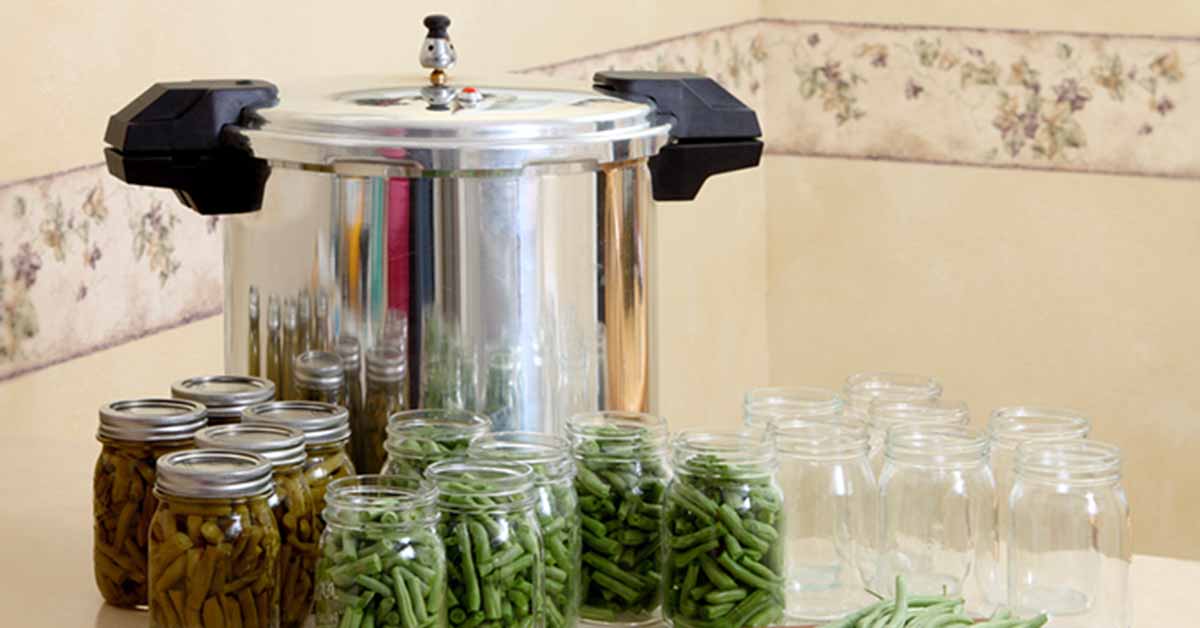
Depending on the size of the kettle, one or two layers of one-quart and smaller jars can be processed at a time. Exactly how much water will be required to generate the necessary pressure will vary as well, depending on size and load. But individual owner’s manuals will give the specifics of how many cups of water to use for each model.
With the jars loaded and the lid locked in place, water is brought to a boil and internal pressure builds. This causes steam to push out all the air through the vent. Once the air has been exhausted, the vent is closed.
To vent a canner, the steam vent or port needs to remain uncovered after it has been filled with the lid locked in place. The kettle is then heated on high until the water boils, and steam can easily be seen as it releases through the open port.
Once the steam plume is strong and steady, begin to time the venting – this usually takes about 10 minutes, but follow your owner’s guide for specifics. The vent port is then closed, usually with a weight, and pressurization begins.
With the vent closed, steam can no longer escape, and pressure builds in the kettle. And when water is under pressure, it will boil at temperatures above 212°. At 5 pounds of pressure, it boils at 228°F. And at 10 pounds of pressure, the boiling point is 240°F. At 15 psi, it boils at 250°F.
Now, in this sealed environment, the jars share a space with only boiling water and steam. And once the air has been vented out, the heat can penetrate the jars on all sides, raising internal temperatures to that of the steam, or 240°F.
It’s also important to remember that along with steam and air, food also expands as it heats up. This also increases the internal pressure in the jar, which is why leaving half an inch of headspace in each jar is so important – it’s a buffer zone that allows the ingredients to expand as they heat, without blowing up the jar or its seal.
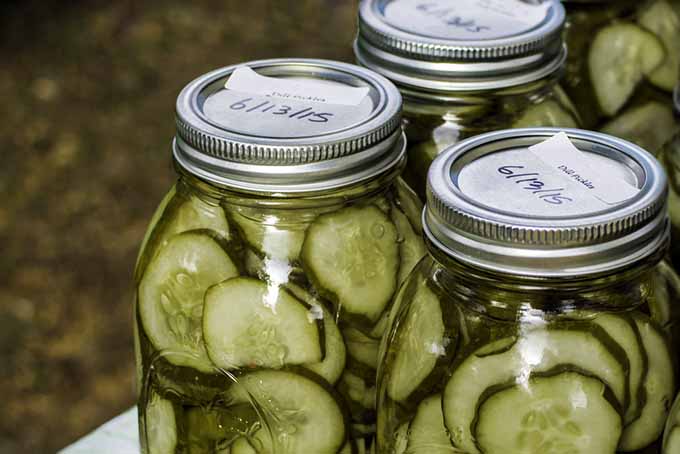
Once the jars and their contents are pressurized, they’re ready to be processed. At the end of processing, the heat source is removed, boiling slows and stops, and the temperature and pressure in the kettle begin to fall as they cool. Within the jars, temperature and pressure slowly follow suit.
As the unit cools, it’s necessary to allow the pressure gauge to reach zero before the vent is opened. Opening the vent before zero pressure is reached increases the chance of exploding jars. If opened too soon, the sudden release of pressure to zero can cause the steam within a jar to force the liquids to boil out with an explosive force.
Once pressure has returned to zero, open the vent and lid and carefully remove the jars. Place them on a tea towel or cooling rack, leaving about an inch of space between each one. Allow to cool overnight, and avoid placing them in drafts or on cold surfaces.
Here’s overall summary on the timing of the full process:
• A fully loaded kettle requires 12-15 minutes of high heat before it begins to vent.
• Most kettles will vent in 10 minutes.
• It takes another 5 minutes or so to pressurize.
• Once pressure is reached, processing generally takes 20-100 minutes
• This is followed by a final cooling time of 20-60 minutes before the jars can be removed.
Return to the Table of Contents
Adjustments Above Sea Level
For elevations above 1,000 feet, you’ll need to make some adjustments for both water bath and pressure kettle canning. This is because atmospheric pressure drops with a rise in elevation, which affects the boiling point of water – and causes it to boil at temps below 212°F.
In order to reach the necessary 240°F for pressure canning, the pressure needs to be increased, but not the processing time.
In contrast, processing time for boiling water canners at high elevations is increased to reach the boiling point of 212°F.
Your owner’s manual should include a table to calculate altitude adjustments. If it doesn’t, the University of Virginia’s Food Science Extension Program offers a useful publication with tables for processing times and altitude adjustments.
Return to the Table of Contents
Are Certain Stovetop Surfaces Better Than Others?
This question can be a little dodgy, for a couple of reasons:
1. If your kettle is constructed of aluminum (and a lot of them are) it won’t work on an induction range (without an iron plate), as it doesn’t have the requisite magnetic properties.
2. Regardless of the material used in their construction, some manufacturers caution against using their products on glass or ceramic stovetops, due to potential for damage to the stove and pot.

Those with gas or electric coil hobs are good to go, but what about the rest?
An easy solution, and one that will keep your kitchen blissfully cool in the summer, is to set up shop outside with a portable gas burner, like those used to heat a fish or turkey fryer.
Just ensure that the burner can be adjusted low enough to reach and maintain the correct pressure, and set it up on a level surface with a nearby work table to hold your gear.
Most canning takes place in the heat of summer, and having the stove on full blast for several hours can make the kitchen oppressively hot. Taking it outside is a great idea for anyone who has an incompatible stove, doesn’t want to take up valuable kitchen space, or simply wants to keep cool while they’re working.
Return to the Table of Contents
Keep an Eye out for these Features
Here are the main features to look for if you’re thinking of purchasing a pressure canner:
Pressure Indicators
Pressure is indicated in one of two ways:
The lid may have a dial gauge that offers a quick and accurate pressure display. Dial gauge canners will most often have a pressure regulator or a counterweight as well, but this is not the same as the weighted gauge – it will not jiggle or rock, and only the dial will accurately display the internal pressure. Pressure is usually displayed in increments of 5, from 5-15 psi.
Pressure is indicated by a weighted gauge, which sits on top of the steam vent. The weight will jiggle, spin a bit, or gently rock several times per minute to indicate that the correct pressure has been reached and is holding steady. Your owner’s manual will describe the specifics of “jiggles per minute” for your model. With weighted gauge canners, more weight is stacked on the vent to increase pressure.
Materials
Pressure canners are constructed of either aluminum or stainless steel, both of which have favorable qualities to consider:
Aluminum kettles are lightweight, inexpensive, and have the exceptional conductivity aluminum is known for. However, over time and with heavy use, aluminum will stain and the surface will pit. This won’t affect its performance, only the aesthetics. To prevent oxidation, add 2 tablespoons of white vinegar to the pot each time it’s used.
Stainless steel kettles will be slightly heavier and have a higher price tag than aluminum. However, their durable, nonporous surfaces will retain their lustrous looks, even after years of service.
But, as we know, stainless steel is not the best metal for conducting heat. A model with an aluminum-clad disc bottom will improve heat distribution significantly, eliminating hot spots for better performance.
Capacity
Capacity is usually measured in quarts. Depending on the size of your kettle, it may be able take two layers of jars. Larger ones that do offer the ability to double stack with pint and half-pint jars will require an extra rack.
Also, capacity is measured on the assumption that you will not be using wide-mouth jars. If you add these to the mix, the rack won’t be able to hold as many as indicated in the specs, and you may need to process an extra batch. This isn’t a big deal, just something to keep in mind when you’re planning.
Because they’re such a good investment for a reasonable price, having a couple of different sized canners on hand to choose from is a smart way to easily and conveniently deal with all of your preserving tasks.
Gaskets
Lids that twist and lock will have a rubber gasket that sits between the two metal edges, ensuring a complete seal. This gasket is the part that will wear out the quickest, and it will have to be replaced the most often. Always choose a brand that has a good stock of spare parts readily available, so that inadvertent down time is kept to a minimum.
Lids
The most common lid is the twist and lock style, which employs the above-mentioned gasket. These types will have machined lugs that correspond with lugs on the edge of the kettle. When aligned, the lid drops into place, and then it is given a short twist to lock.
The second type of lid that’s available is the metal-on-metal style, with a series of wing-nut clamps set around the perimeter. When tightened, they create a steam-tight seal, and have no rubber gaskets that can wear out – although a drop of lubrication such as olive oil or petroleum jelly is required with each use.
This style resembles some of the older and more industrial models in appearance, and is very reliable for creating a complete seal.
Handles and Knobs
Look for ones that offer a large, comfortable grip made of heat-resistant materials. A loaded pressure canner is very heavy and full of scalding-hot water.
To move one, they need to be lifted, not dragged or jostled across a surface, so look for handles that offer the best possible grip for a safe and secure purchase.
Knobs too should be made of heat-resistant materials and give a large, comfortable surface to grasp.
Safety Features
Models that come with multiple safety features give the greatest levels of confidence! Ensure the lid-locking mechanism is reliable and look for dual safety vents, or a vent window for those with a gasket.
Above all, always ensure that your pressure canner is listed with an agency recognized for safety testing, such as UL (Underwriters Laboratories) or CUL (Canadian Underwriters Laboratories).
Return to the Table of Contents
Safety Tips
Using a pressure canner isn’t really any more dangerous than any other kitchen appliance, as long as you use common sense, follow directions, and avoid the danger zones. The following tips will help you to use your new addition safely
– Never allow your face, arm, hand, or any exposed skin to get close to the steam vents – they exhaust some very intense heat that will give a nasty burn, so be mindful of this hazard. When possible, orient the vents at the back of the pot, and direct the plume of steam to the back of your stovetop or overhead vent.
– Ensure that the pressure in the canner has equalized with the outside pressure before opening the lid. If pressure isn’t normalized – indicated by returning to zero – it can cause steam and boiling liquid to shoot through the lid gap, and can also cause jars full of hot liquids to break.
– If for some reason you lose pressure while processing, return the kettle to the necessary level and start the processing time again. Foods need to be processed for the correct amount of time at the right pressure to ensure that all bacteria is destroyed.
– And of course, be careful lifting and moving these big kettles. They’re heavy and awkward and full of hot materials, so extra care needs to be taken when working with them.
Return to the Table of Contents
Pressure Canners vs. Pressure Cookers
Pressure cookers are not pressure canners, and can’t be used for canning. Conversely, pressure canners are in fact pressure cookers, and can be used for cooking as well as canning. In other words, canners can cook, but cookers can’t can (say that real fast three times).
Pressure canners have been designed specifically for canning foods. Larger than most pressure cookers, they hold heat and pressure for much longer periods, which is a critical component in destroying harmful microbes.
Because of this, using a pressure cooker for canning is never recommended, due to the risk of failing to destroy harmful bacteria.
Now that you’re eager to get started with your first batch of the season, it’s time to think about selecting a canner! Check out the following reviews of our favorite models.
Return to the Table of Contents
Jars, Lids, and Labels
Choose jars sizes that are appropriate for what you are preserving. If you plan to store your goods for home consumption, choose jars that are economical, functional, and well made.
Wash and rinse jars and lids before using. Jars for foods processed by pressurized steam do not need to be sterilized with boiling water.
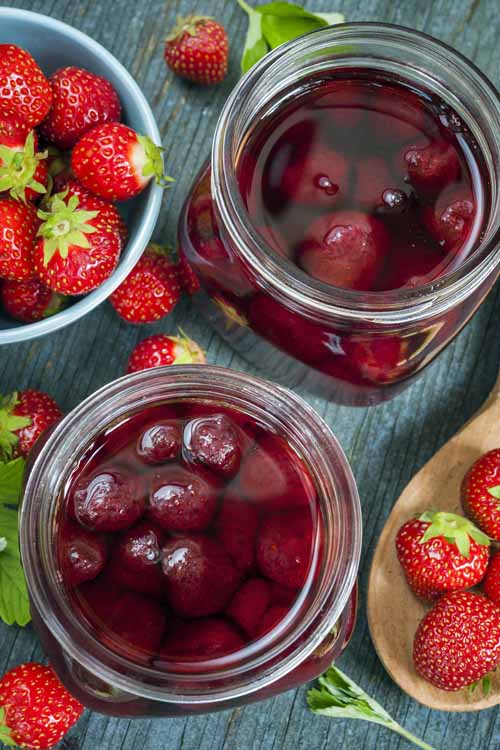
Remember to label your preserves with the date and a description of the contents as well, so you can rotate your cupboard’s inventory using the FIFO method (First In, First Out).
With just a little care in use and handling, jars may be reused season after season. You will, however, have to supplement your collection with new lids each year. Find out more about canning jars and lids now.
Return to the Table of Contents
Pressure Canner Reviews – Our Top Rated Picks
Best Overall Performance: All American
With its robust build and metal-on-metal seal, the All American 921 gets top marks for Best Overall Performance. One of the most popular models with online shoppers, the 921 is from a long line of reliable pressure canners manufactured by All American since 1930. Even at first glance, you know that the All American canner means business.

All American 921 21-1/2-Quart Pressure Cooker/Canner
Professional quality components and materials make this kettle reliable and durable from start to finish, and it doesn’t require a rubber gasket. The dial gauge is geared for consistent accuracy, and the three-stage pressure regulator is low maintenance for a carefree operation.
With its large size and industrial profile, the All American looks like it would be right at home in a commercial environment. But that’s one of the qualities that makes it so appealing – it’s big and strong, and it looks like one bad-ass piece of cookware!
Designed to deliver the extended temperatures and pressure needed for canning, the All American is also ideal for use as a pressure cooker, and makes cooking large quantities of food quick and simple.
Constructed of professional quality and extra heavy-duty hand-cast aluminum with a satin finish, these pressure canners heat quickly, and wear well. They are also easy to clean, and won’t rust.
In today’s market, only All American pressure canners feature the exclusive, precision machined metal-to-metal sealing system. Six large Bakelite wingnuts align and clamp the lid to the kettle to form a steam-tight seal that tightly locks the lid in place. And because no gasket is used, the cover always opens and closes with minimum effort.
These beautiful canners are available in 10.5, 15.5, 21.5, 25, 30, and 41.5 quart sizes.
Although you will probably want a smaller and a larger model later on, we recommend starting out with the 21-quart “921” model. It has a capacity of 21.5 quarts, which works out to 7 regular quart jars or 19 pint jars, with a somewhat lower capacity for wide-mouthed jars.
This is a great size that is big enough to get a larger batch processed, while being small enough for one person to pack around.
Trust me, those big 41 1/2-quart models are a chore to tote, and they are incredibly heavy when full. You’d need a pretty healthy stove to support one, however, they can’t be beat for mass processing.

All-American 30-Quart Pressure Cooker/Canner
The 30-quart offering is also a viable model, as it doubles your 7 quart jar capacity to 14 jars without being too bulky and heavy.
On the other hand, having a smaller model is great for stovetop processing of small amounts of jam, plus its ability to double up as a pressure cooker or stockpot.
Check out this chart to find the best size for you:
| Model | Capacity | Specifications |
|---|---|---|
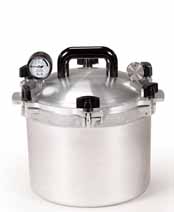
|
|
|
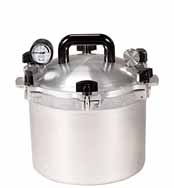
|
|
|
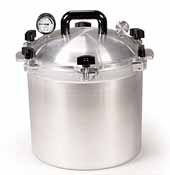
|
|
|

|
|
|

|
|
|
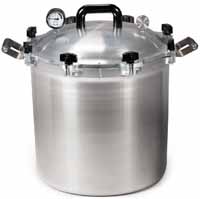
|
|
|
The All American features a geared dial steam gauge for precision readouts (as opposed to a lever-style gauge), and has a dual vent system for extra safety – the overpressure valve will automatically vent steam if the main vent pipe should become clogged.
The round, three-stage pressure regulator sits on top of the vent pipe and offers adjustments of 5, 10, and 15 pounds to ensure your batch of jars will be sterilized and safe regardless of the altitude where you live.
A large, heavy-duty loop handle is made of tough and heat-resistant Bakelite and is located right in the center of the pot’s lid, making it easy and safe to remove.
For extra durability, the edges of both the kettle and lid are constructed with double the thickness of aluminum for extra protection, as these are the points that tend to receive the heaviest wear and tear.
The All American is shipped with a cooking/canning rack and a well-written and comprehensive owner’s manual that includes altitude tables, operation instructions, and recipes for both canning and pressure cooking.
It can also be used as a hot water bath canner.
When cleaning, it’s important to periodically give the seal edges a bit of a scrub, to prevent a buildup of hardened lubricant from developing – lightly use some extra-fine steel wool to clean if necessary. Wash the kettle and rack in warm, soapy water, rinse, and dry thoroughly to prevent pitting.
Wipe the lid with a damp, soapy cloth, wipe again with a clean cloth, and dry – taking care not to immerse the gauge in water. Check and clean all vents, using a pipe cleaner to remove grit and grime if needed.
A great example of made in the USA quality and workmanship out of Wisconsin, the All American will last for decades. This model is UL listed and comes with a 1-year limited warranty against manufacturing defects.
Please note that All American does not recommend this canner for use on glass-top stoves, because its weight may cause glass or ceramic hobs to break.
What Others Are Saying
The following comments are a compilation of the most frequent remarks from verified shoppers at Amazon.
The All American pressure canner gets outstanding grades from its many fans, particularly in the areas of robust materials and construction, user-friendly operation, and the professional results it achieves.
Many, many reviewers praise the high quality industrial grade of this brand, likening it to a piece of cookware that would be at home in a commercial kitchen.
The cast aluminum is thick and hefty, and the machined edges fit together nicely. Components like the gauge, rack, wingnuts, and handle are all up to professional standards, with several owners commenting they believe it will outlast their grandkids!
It’s also easy and safe to use. The lid and kettle align without hassle, which makes sealing and securing the lid with the wingnuts quick and simple. Several owners recommend following All American’s instructions for lubricating the rims and wingnuts with petroleum jelly or olive oil before each use, to get a complete steam seal.
All of the sizes come to pressure very quickly (with the smaller models being faster due to less volume, of course). And once the kettle has been vented, it holds the pressure steady without any need for fussiness or babysitting of weights.
For those who use it as a hot water canner or pressure cooker, equally good results may be obtained.
The instruction manual is well worth reading as it is loaded with information, tips, and recipes. And it also comes with a DVD that outlines basic operations.
On the complaints side of the ledger, there are very few at the time of this writing.
Besides a common complaint that the Amazon listing fails to mention that the manufacturer cautions against using this model on glass or ceramic stovetops, the only other thread with a common theme comes from a small number of users who have experienced difficulty with the lid sticking when processing is finished.
This could, of course, be related to improper edge lubrication – a dab of petroleum jelly (i.e. Vaseline) should be applied with every use to ensure that the seal can be broken easily. Yes, the tolerances of this canner are that tight!
Summary
Without question, the All American pressure canner is a huge hit with online shoppers.
With its “skookum” build (Chinook slang meaning strong, monstrous, ultimate) and no-nonsense, commercial-quality design, it delivers professional quality results. The cast aluminum is long wearing and sturdy, it heats quickly, and it holds an even temperature with steady pressure. And, being gasket-free, a strong metal-on-metal seal is assured every time.
Although it is robust and rugged, it’s also easy to use with carefree operation – this is the kind of quality one longs for in kitchen cookware.
It’s at the high end of the price range for pressure canners – but it is made in the USA, and it truly will last for generations. So if you have some serious plans for canning in quantity this summer and for years to come, the All American is the best you can buy to get those big jobs done reliably.
Check prices and read customer reviews on Amazon now.
Best Full-Size Canner for Glass Stovetops: Presto
The Presto 23-Quart Pressure Canner takes the top spot for Best Full-Size Canner for Glass Stovetops. A solid performer, this dial-gauge kettle also has the best instruction manual and supportive customer service – an important consideration for those new to the genre.

Presto 01781 23-Quart Pressure Canner and Cooker
Presto is another well-known name in the canning world, and their 23-quart dial-gauge pressure canner and cooker is also a very popular model with online shoppers.
Weighing in at only 12 pounds and measuring approximately 15.5 x 15 x 14.75”, the well-built Presto is light enough to perform on glass and ceramic ranges, as well as electric coil and gas stoves.
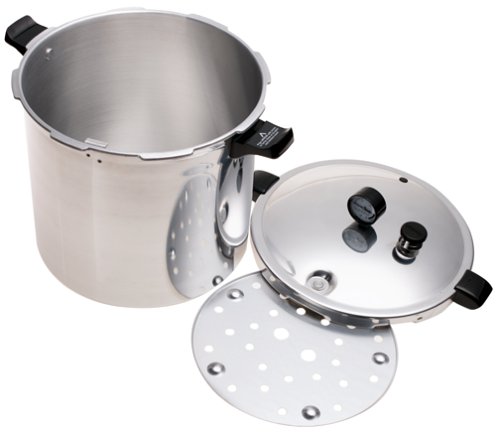
The Presto offers more than adequate capacity for most home canning needs. The large kettle is made of warp-resistant, heavy gauge aluminum. One of the best metals for fast and even heating, it gives quick and efficient results for processing large batches.

Presto 1755 16-Quart Aluminum Pressure Cooker/Canner
With this size, you can process up to 7 regular-mouth quart jars, 20 pint jars, or 24 half-pint jars in one batch. It also comes in a 16-quart size as shown above.
The Presto comes with a canning rack that lifts jars up from the bottom, allowing the hot water to circulate freely. It can also be used as a hot water bath canner, or you use it as a pressure cooker with the rack doubling as a steamer tray, to safely and nutritiously prepare food.
The stainless steel lid holds the rubber sealing ring, which forms a pressure-tight seal between the kettle and the cover, keeping steam safely inside.
The lid cover lock engages with a locking bracket inside the kettle, to prevent the lid from being accidentally opened when under pressure. And, the edges of the kettle and lid have meshing lugs, which are engaged with a small twist to open or close.
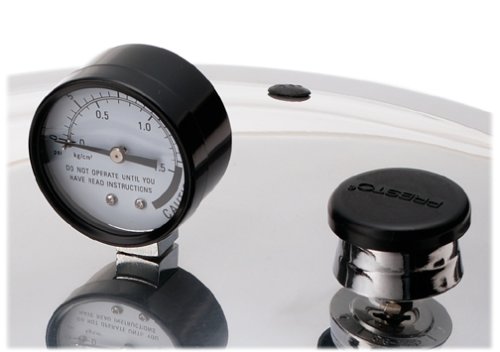
A dial pressure gauge sits atop the lid to easily monitor pressure readings, with pressure controlled and maintained by the heat setting on your stove. The vent pipe acts as the primary pressure relief valve, and it will release pressure in excess of 15 pounds – with the pressure regulator sitting loosely on top of the vent pipe.
The 15 psi weight is included, but the 5 and 10-pound weights for the pressure regulator need to be ordered separately.
An air vent/cover lock vents steam from the canner, and serves as a visual indicator for when the kettle is under pressure. It also engages with the locking bracket inside the kettle for safety. There’s also a rubber overpressure plug in the lid, to blow steam if excess pressure builds internally.
According to Presto, replacement of the rubber gasket needs to be done every three or four years, as the rubber will dry out and erode over time. And the overpressure plug should be replaced at the same time, as its rubber gasket can dry out too.
Also, the overpressure plug will need to be replaced if it’s ever forced out from excess pressure.
Wash the kettle, gasket, and rack with warm, soapy water and wipe down the lid with the same – and please note that the lid should not be immersed in water, as care needs to be taken when cleaning the delicate gauge. Check and clean all vents, using a pipe cleaner to remove any trapped debris.
The Presto will work on gas, electric, and glass stovetops (but do check the owner’s manual for your glass-top stoves to be sure). It is not compatible with induction ranges, due to aluminum’s lack of magnetic properties.
Presto cautions against using this model on outdoor gas burners of over 12,000 BTUs, as they aren’t capable of the fine temperature adjustments needed to hold a steady pressure.
The manufacturer also suggests testing your pressure kettle before each canning season, to ensure all components are in tip-top shape and ready to go when needed. As stated above, this is great advice and should be recommended for all models.
Made in China, the Presto is UL listed, and comes with a very informative, well-written Instruction Manual with recipes for both canning and cooking. It also features Presto’s 12-year limited warranty against defects in materials or workmanship.
What Others Are Saying
The following notes have been gleaned from the most common comments of verified purchasers at Amazon.
Fans of the Presto pressure canner give it top marks for solid construction, reliable and easy performance, and the many safety features it offers.
The Presto 23-quart kettle is solidly built of good quality material and components that make using it simple and enjoyable. The rubber gasket makes a complete seal without any fussiness, the lid locks into place with a simple twist, and the dial gauge gives an accurate pressure reading for carefree operation.
It does an excellent job of retaining pressure, and the gasket will last for three or four years before a replacement is required, depending of course on how often you use it – with replacement gaskets readily available online from Presto.
It heats quickly and comes to pressure fast, thanks to the aluminum construction and the efficient seal.
One of the most favorable features of this large-capacity kettle is that it works on glass stoves. At only 12 pounds, Presto endorses its use on glass and ceramic – and at this time, no reports of damage to either have come forth in the reviews.
It works as a boiling-water canner equally well, and many use it as a pressure cooker too.
Presto customer service has also received some very favorable comments from shoppers as being knowledgeable, professional, courteous, and helpful.
The Instruction Manual gets kudos as well. It’s written in an easy to follow manner with clear directions, lots of info, tips, suggestions, and oodles of recipes. [stopped here]
Critical reviews are few compared to the favorable ones, but several small issues are repeated in the comments.
The first is that it comes with a 15-pound regulator only. Presto has replied to these complaints, stating that the gauge displays the amount of internal pressure, and the stove is then adjusted to maintain steady pressure at 5 or 10 psi.
But there are some that find adjusting the stove to be a finicky process, and these purchasers would like to see 10- and 5-pound regulators included.
A small handful of reviewers complained of receiving units with defective pressure gauges on arrival, which were returned or replaced without any further hassle.
Summary
The Presto 23-Quart Pressure Canner and Cooker makes home canning with confidence simple and easy. A great canner for novice and expert alike, it’s easy to understand why this is such a popular model.
It’s constructed with solid materials yet it isn’t overwhelmingly heavy, and it delivers on reliable and easy-to-use performance with pleasing results. As an added bonus, the lightweight construction means it’s even suitable for use on glass stovetops.
All components work together smoothly to create a solid unit, while the rubber gasket produces a secure seal and brings the kettle to pressure quickly, for efficient processing. Presto also offers a detailed owner’s manual that is invaluable for the novice, and employs engaged customer service reps who are good at solving problems.
The Presto 23-Quart is a worthwhile investment for those looking to safely preserve their own garden harvest, or to take advantage of seasonal produce and proteins when they come on sale.
Check prices and read customer reviews on Amazon now.
Best Dual Use Model: Granite Ware
From American cookware manufacturers Columbian Home Products, we have the 20-quart weighted-gauge pressure canner/cooker/steamer from their Granite Ware line.
Made of hand-anodized aluminum for safe and efficient heat distribution, the Granite Ware canner can also safely be used as a pressure cooker or steamer without altering the flavor or color of food in any way.
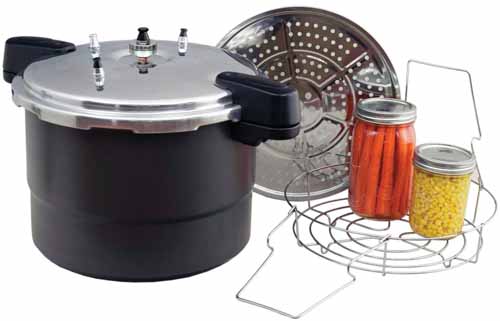
Granite Ware 0730-2 Pressure Canner/Cooker/Steamer, 20-Quart
The sturdy, polished aluminum lid forms a steam-tight seal with a rubber gasket that fits snugly into the lid rim. The lid drops into place when the lugs align with the kettle, and it seals with a small twist. It also offers stay-cool handles on both the lid and kettle, for a sure and safe grip.
Granite Ware recommends replacing the gaskets each canning season, and these are available online through their website.
The Granite Ware Pressure Canner features a pop-up pressure indicator, which also locks the lid safely in place. As an added safety feature, a pin in the handle base clips to a latch in the kettle, so the lid locks won’t release when it’s pressurized.
The vent pipe located in the center of the lid has an adjustable pressure regulator of 5, 10, and 15 psi for excellent results at any elevation, without the need to constantly monitor and calibrate the pressure.
There are two safety valves, one of all metal that will exhaust extra pressure while issuing a whistle, and another with a black cap that will go off as a backup safety release if the main vent pipe fails or is blocked.

The included jar rack fits snugly into the pot to keep jars elevated from the bottom of the kettle, and it has two convenient folding handles to safely and easily raise and lower your jars.
For cooking, an included steamer trivet fits snugly into the stepped bottom to keep foods above the cooking liquid while steaming – a handy and quick way to cook roasts and large quantities of food.
Granite Ware recommends hand washing the lid, kettle, rack, trivet, and gasket sealing ring in warm, soapy water. Rinse with clear water and dry thoroughly before storing. Check and clean all vents, using a pipe cleaner to remove any grime as needed.
UL listed, the Granite Ware will hold up to 7 regular quart-sized jars or 8 pint jars, or 24 half-pint jars using a double tier.
It also comes with an Instruction Manual.
Granite Ware does not recommend that this model be used on glass stovetops. It measures approximately 14.5 x 14 x 13.5” and weighs in at 11.2 pounds.
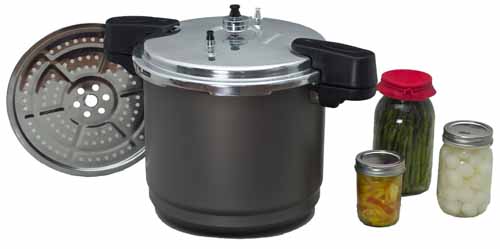
Granite Ware F0732-2 Pressure Canner and Cooker/Steamer, 12-Quart, Black
The Granite Ware also comes in a 12-quart size.
Made in China, it comes with Granite Wear’s limited lifetime warranty against any defects in materials or workmanship.
What Others Are Saying
The following notes are compiled from the most frequent comments of verified shoppers at Amazon.
The Granite Ware 20-Quart Pressure Canner has its fair share of fans who rate it highly for the easy to use design, confidence-building safety features, and sturdy construction.
A good number of reviewers mentioned they’re new to the world of canning, and they found comfort and confidence in the sense of security the dual safety vents provide.
The weighted pressure regulator with settings of 5, 10, and 15 psi proves to be a reliable and low-maintenance method for maintaining pressure, as there is no need to manually calibrate a gauge. Plus, the simple and easy-to-use design gets nods of appreciation as well.
The canner is durable and well made with solid construction and good quality components throughout, and the tough, anodized aluminum doesn’t rust. It also heats quickly, coming to pressure in a short amount of time.
A common theme in both positive and critical reviews is that the information in the instruction manual is somewhat on the bare-bones side.
And the most common comment in the critical column is about the jar rack. A number of reviewers have complained of it being of cheap quality with the coating peeling and flaking (or even appearing to have melted) after use.
Summary
The Granite Ware 20-Quart Pressure Canner is a solid and durable kettle with a weighted regulator that offers easy to use and reliable operation.
Dual safety vents give an extra level of security, and the anodized aluminum kettle and steamer trivet make it well suited for pressure cooking as well as canning.
However, the instruction manual is lean on information, and this is one of those situations where a good book can be invaluable – particularly for those with little experience.
Well suited for those who don’t want to fiddle with calibrating gauges, the Granite Ware Canner provides reliable performance and safety. It’s a good value for the price as well.
Check prices and read customer reviews on Amazon now.
Another Great Option: Mirro Pressure Canner and Cooker
The Mirro line of aluminum cookware traces its roots back to the late 1800s in Wisconsin, with the brand name itself first introduced in 1911. Today, Mirro brings us this large and robust weighted-gauge pressure canner and cooker – another highly popular model with online shoppers.

Mirro 92122A Polished Aluminum Pressure Cooker Cookware, 22-Quart, Silver
Constructed of rustproof, heavy-gauge aluminum, it’s fast to heat, heats evenly, and comes to pressure quickly as well. And with four separate safety features, even beginners will have confidence in its safe and secure operation.
The lid drops into place when the lugs are correctly aligned with the kettle, and locks with a twist to prevent opening when under pressure. A safety pin in the lid pushes on the gasket, to prevent sealing and pressurizing if the lid is not closed properly.
The lid also houses a rubber sealing gasket that sits in the lid lip, and forms a steam-tight seal for canning and cooking. Mirro suggests replacing the sealing gasket if you notice steam escaping from the sealed edge, and these can be purchased online from their website.
A reusable overpressure plug will activate if the main steam vent should become clogged, or if excess pressure builds in the kettle. And should both the steam vent and overpressure plug fail simultaneously, the excess pressure will force the gasket out of the overpressure window to break the seal and release steam.
A weighted pressure gauge model, it comes with three options to hold steady pressure for canning and cooking in weights of 5, 10, and 15 psi, which snap into place over the steam vent.
The Mirro also comes with two flat jar racks for two-tier canning of pint and half-pint jars. It holds 7 quart jars, or 18 pint jars or 26 half-pints if using the double rack. and is also available in a 16-quart size.
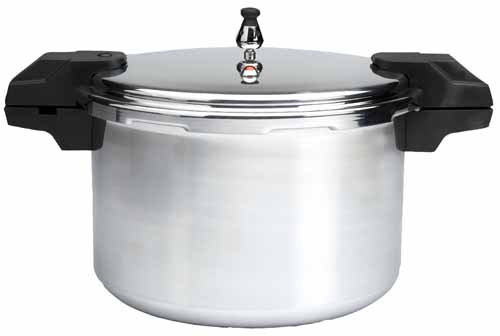
Mirro 92116 Polished Aluminum 16-Quart Pressure Cooker Canner Cookware, Silver
Mirro does not recommend this model for use on glass stovetops.
The Mirro weighs approximately 17 x 14 x 17”, and weighs 20 pounds. Made in China, it is UL listed and comes with WearEver’s limited one-year warranty against defects in materials or workmanship, as well as an Instruction Manual and recipe booklet.
Recommended cleaning instructions are to wash the lid, kettle, rack, and gasket in hot, soapy water after each use. Rinse and dry thoroughly, and check the vents to ensure they’re clear – remove any debris with a pipe cleaner as necessary.
What Others Are Saying
The following remarks reflect the most frequent comments from verified purchasers at Amazon.
Clearly, fans of the Mirro are fans of safety, giving it top grades for its many safety features, as well as the solid construction and convenient weighted-gauge operation.
Heavy-duty in construction, it heats up quickly with an even heat that produces steam and pressure in a short period.
It also has the capacity to handle processing large batches, making it efficient as well as effective – with the two tiers offering a great timesaving solution.
A good number of reviewers also report equal success when using it for cooking roasts and other large-quantity meals. And for some it serves as a boiling-water canner as well.
The weighted-gauge regulator is safe and easy to use, and requires little attention to maintain a steady pressure.
And of course, the many safety features receive high praise for their impressive ability to raise the user’s confidence.
In the complaints column, the main issues fall into three camps:
The first regards the instruction manual, and its poor directions for using the regulator weights – once loaded on the steam vent, they need an extra push to snap into place. Unfortunately, there’s no mention of this in the manual, which leads to the second complaint…
Some reviewers have experienced difficulty in getting the pot to pressurize. Based on these comments, I get the impression that for many, the actual issue may be that the weights are not being fully engaged with that extra “snap” – so steam continues to escape.
There are also a small handful of comments criticizing the design of the handle lock, with reports of steam escaping from this area when pressurizing.
Summary
The Mirro 22-Quart Pressure Canner is another very popular model with online shoppers.
The weighted-gauge regulator makes it easy to maintain a steady pressure, and the many steam-release vents go the extra mile in safety features, giving users a boost of confidence.
In addition, its sturdy build, heat-conducting aluminum, and large capacity make processing large batches of canned goods quick and efficient.
Mirro could improve their customer satisfaction even more by rewriting the directions on the proper use of the weight rings, but all in all, it’s a safe and reliable performer that offers good value.
Check prices and read customer reviews on Amazon now.
Best Small Canner: Zavor Duo
With its 10-quart capacity, the Zavor Duo Canning Set gets the nod for Best Small-Sized Canner. When Fagor America shut down, a trusted brand among home canning enthusiasts, a group of their employees were inspired to start a new company, Zavor.
Handsome stainless steel construction and multiple safety features make it a popular choice as a conveniently-sized pressure canner that’s perfect for processing smaller batches. Plus, it easily doubles as a non-reactive pressure cooker.

Zavor Duo 10-Piece Stainless Steel Pressure Canning Set
And with the convenient utensil package that’s included with purchase, you’re ready to start canning as soon as your delivery arrives.
Constructed from high gauge 18/10 stainless steel, it features a thermo heat conductive base comprised of a layer of aluminum sandwiches between two layers of stainless steel, for safe food contact and even heat distribution. And, it will work on all stovetops – gas, electric, ceramic, glass, and even induction.
The lid is also made of high quality stainless steel, and the raised indentation in the top of the lid easily aligns with the cutout in the top of the base handle to securely lock into position with a small twist. The yellow pressure lock allows you to lock the canner when the lid is in place with the simple slide of a switch.
A silicone gasket is positioned around the underside of the lid to provide a steam-tight seal, and it must always be used if you want to build pressure.
The operation valve is a spring-operated mechanism located on the lid handle, with an easy to use dial format. It features four settings: low (8 psi) and high pressure (15 psi), steam-release, and clean.
As an added safety feature, the kettle will not build pressure if the pressure lock has not been engaged in the closed position, and it ensures that the kettle will never open while under pressure.
The pressure indicator is located on top of the lid handle, and the yellow-tipped rod will rise automatically as pressure builds, giving a visual indication that it’s under pressure and can’t be opened.
A safety valve located under the lid will be activated in the event of excess pressure buildup. And an additional safety vent located in the lid cutout will release steam by tearing the gasket, should both pressure release valves become blocked simultaneously.
Of course, if this happens, the gasket will need to be replaced – with replacement gaskets and other parts easily obtained online from the Zavor America website.
The Zavor Duo Canning Set also comes with a stainless steel jar rack, a BPA-free wide-mouth funnel and ladle, a jar lifter with rubber grips and handles, a jar wrench, a magnetic lid lifter, a BPA-free bubble remover, plus pressure cooking and home canning cookbooks, and an instruction manual.
The sleek black handles are ergonomically designed with heat-resistant plastic, and line up easily to indicate when the lid is engaged with the kettle.
For washing, the pot is dishwasher safe, but the lid, gasket, and rack should be washed by hand with warm, soapy water and a nonabrasive cleaning pad. Rinse and dry promptly.
The Zavor kettle measures approximately 17 x 11.45 x 11 inches and weighs a little under 11 pounds. It has the capacity to hold four one-quart jars, or four one-pint jars, or 6 half-pint jars. It does come in smaller sizes for cooking, but Zavor recommends using only the 10-quart model for canning, and it’s the only size the jar rack will fit inside.
This product also comes with Zavor’s 10-year warranty to be free of defects in material and workmanship.
What Others Are Saying
The following notes are compiled from the most common remarks from verified purchasers at Amazon.
The Zavor 10-Piece Canning Set gets high marks for being a complete kit that requires all the necessary items a beginning canner needs, and its convenient size for processing small batches. Others argued that it was too small for the big-batch items they hoped to process
A number of reviewers reported issues with locking the lid into place, though most said it was well-made with quality components.
And having all the canning tools and accessories bundled together is a feature many found to be helpful and convenient, though at least one claimed they could get a better deal buying these pieces individually.
A definite highlight is that, due to its relatively small size, the Zavor 10-Quart is safe to use on glass stovetops. And because of its steel construction, it can be used on induction ranges as well.
Plus, the size also makes it very convenient for those who only want to process smaller batches.
It also maintains pressure well, and regulating it is achieved simply by adjusting the burner temperature. Another highlight is the Zavor’s ability to rapidly and safely depressurize just by turning the dial to the steam release setting, a feature not found in the larger models.
The inclusion of many safety features also means safe and secure operation.
But many noted that according to modern day USDA canning recommendations the lack of an internal pressure gauge does not deem it safe for certain types of canning. Some also reported inconsistent results.
Summary
With its stainless steel construction and the triple-layer stainless and aluminum bottom, the Zavor 10-Quart heats quickly, and proves to be a reliable pressure canner and cooker.
It can be used on all stovetops, and the size makes it a convenient option for those looking to process smaller batches of food.
The included utensil bundle is convenient to have, especially for beginners. This is good option for those who want a pressure cooker that can also do some canning on the side.
Check prices and read more reviews on Amazon now.
Return to the Table of Contents
Gear for the Pressure Canner’s Kit
Minimal extra gear is needed for pressure canning, but a few particular items are nice to have. Here’s a list of the basics:
- Wide-mouthed funnels – A set of three is ideal to accommodate regular and wide-mouth jars, in either food-safe plastic or stainless steel.
- A sturdy set of tongs with rubber grips – Tongs should be robust with a strong pivot point, adequate-sized handle loops, and rubber grips to safely grip and lift hot items.
- A good set of jar lifters – Similar to tongs, they’re shorter with a wide grip, and the pivot is located near the center of the arms. Rubber handles and grips give needed stability to securely lift all sizes of hot jars from the kettle.
- A large, stainless steel ladle – This is helpful to fill jars.
- A magnetic lid lifter – Safely lifts lids and threads out of hot water.
- A food-safe plastic or silicone bubble remover – One of these will easily remove any air bubbles that are trapped in the jar.
- A silicone-coated jar wrench – Handy to have, making handling hot jars easier.
- Silicone heat-protective gloves – Gives better dexterity than oven mitts, an important consideration when handling large, heavy kettles full of boiling hot water, steam, and jars. Consider getting a waterproof set to protect against splashes.
- A good set of kitchen towels – All of those jars have to sit somewhere to cool, and clean kitchen towels give a soft, non-slip surface. And you’ll also need a clean dishcloth to wipe the jar rims and threads before sealing.
- A food mill, food strainer, or chinois – Having one or more of these is indispensable. They’re an easy and convenient way to quickly grind or puree foods for bottling.
- Racks – These are are included with most kettles, but if you need to buy an additional one, ensure it will fit the inside dimensions of your kettle.
- Outdoor propane cooker – A single burner version like a fish or turkey fryer or a multi-burner unit such as those made by Camp Chef, is a great item to use if you don’t want your home to become a sauna while canning. With the stove on high, and big metal kettles full of hot water and steam, taking it outside can keep you and your kitchen cool as a cucumber this summer. Plus, you don’t risk cracking glass topped stoves.
- One or two good books on home canning – These can be very helpful as well. Not all brands offer a decent owner’s manual, and even if you have your favorite heirloom recipes, a book with the current food safety regulations is a handy resource to have on hand.
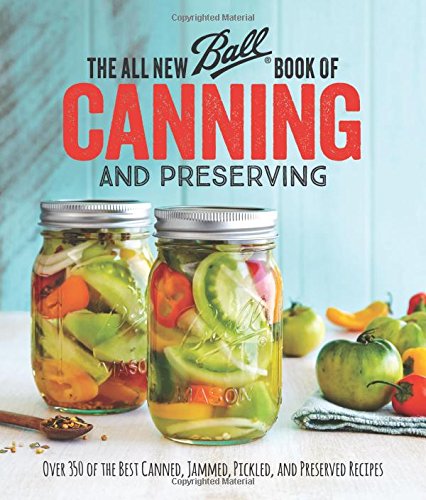
Look for books that cater to the particular foods that you like to preserve and that have well-written, complete instructions on methods and practices. The All New Ball Book Of Canning And Preserving is a good place to start.
Find more tips to get you started in your canning adventures now.
Selecting and Preparing Food
For best results, use only veggies, fruit, and proteins that are at peak quality – any overripe or damaged goods will not make a good canned product, and the risk of contamination is higher.
It’s important to always follow recipe directions for ingredient preparation, such as peeling, slicing, chopping, puréeing, and so on. Any alterations to how the food is prepped can affect the heat penetration, and may result in under-processing.
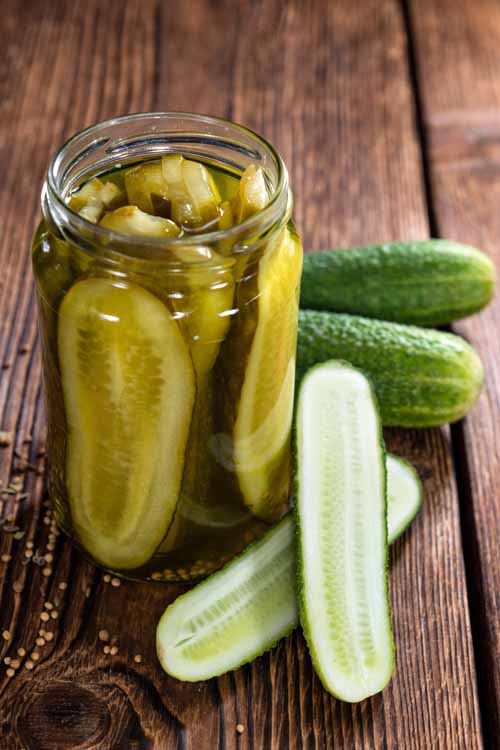
Two methods are used for packing food into jars: raw pack and hot pack. Again, follow the recipe directions for the best packing method for the particular food being processed.
If you have the option to select your own method, the boiling-water hot pack tends to yield better color and flavor than the raw pack process.
Return to the Table of Contents
A Few Thoughts Before You Begin
A little planning and prep will go a long way towards a successful canning session.
Prior to harvest time, do a trial run with your pressure canner to ensure that everything is functioning as it should. Clean steam vents with a pipe cleaner, and check gaskets to make sure they are sealing correctly.
If you have a dial gauge, check with the manufacturer to determine how to properly test the gauge.
When you’re satisfied your canner is working as it should, it’s time to gather all of the equipment, tools, supplies, and ingredients that you’ll need.
It’s also a good idea to read through the recipe directions entirely before proceeding, and don’t omit or substitute any ingredients, as this may affect processing time.
Return to the Table of Contents
Conclusion
That brings us to the end of our look at the remarkable pressure canner and the exciting culinary options that it brings.
These large kettles offer outstanding opportunities for preserving a wide range of foods. You can bottle up your garden harvest, take advantage of seasonal savings, and safely can fish, game, meat, and poultry.

Straightforward in design, a good pressure canner is a worthwhile investment that will stretch your food budget with a pantry full of goodies.
If you want to put those kettles to use with recipes for spicy pickling, get to know the process a little better by listening to the latest episode of the Foodal Podcast: managing editor Allison Sidhu discusses the world of spicy, fermented condiments with Kirsten and Christopher Shockey, fermentation experts and authors of the new cookbook a new cookbook called Fiery Ferments.
For those of you who have experience with these wonderful kettles already, tell us your best tips in the comments below – your insights are always appreciated! And for those that don’t, this is a great place to get your questions answered, so ask away!
Return to the Table of Contents
First published July 10th, 2016. Last updated January 20th, 2020.
About Lorna Kring
Recently retired as a costume specialist in the TV and film industry, Lorna now enjoys blogging on contemporary lifestyle themes. A bit daft about the garden, she’s particularly obsessed with organic tomatoes and herbs, and delights in breaking bread with family and friends.


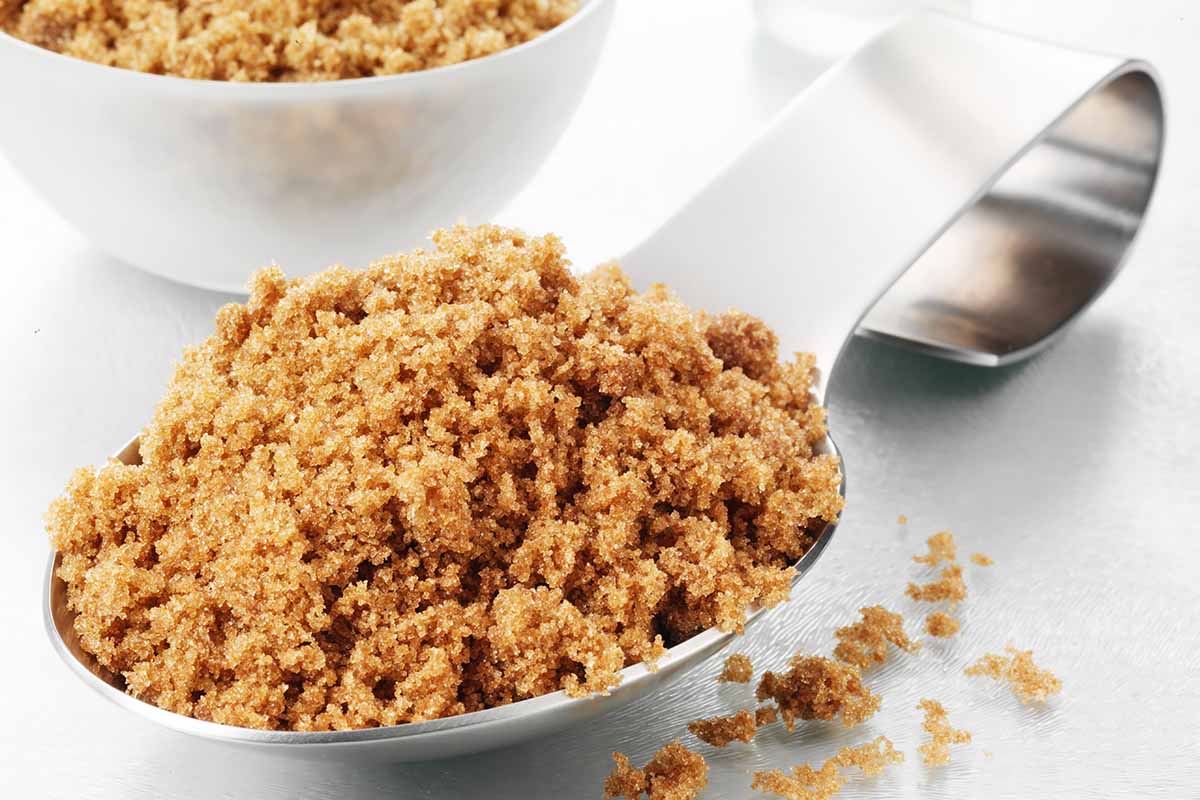
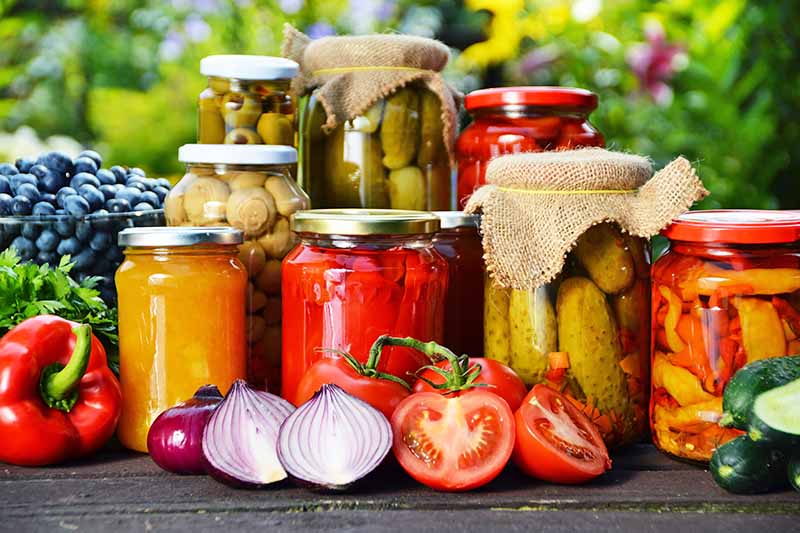
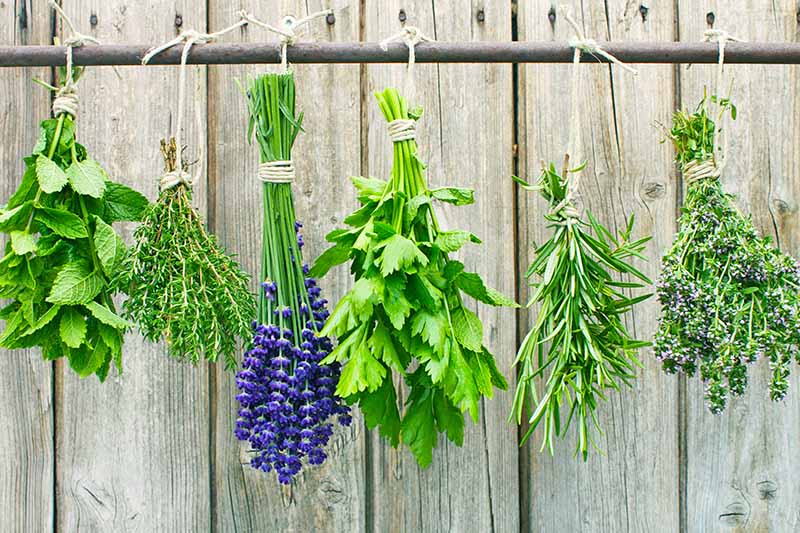
The Fagor Duo is currently unavailable on Amazon. Can you recommend a similar product?
The All-American and Presto are great options Melanie, and both have smaller sized options – you’ll find the links in their review sections above. Hope this helps!
Can I use a pressure canner to can soups? I make a variety of my own recipes so I would not be following someone else’s recipes.
Hi Liz, yes soups need to be pressure canned (not a hot water bath) for food safety.
What do the measurements refer to? For instance on the 23 quart Presto they are, “12 pounds and measuring approximately 15.5 x 15 x 14.75”,” Which number is height? Which is width? I can’t even guess why there are three numbers. And, are they outside numbers? Or inside the pot? What are the measurements on the 16 quart Presto?
And, I’m in Canada so my new jars are litres, which are slightly bigger than quarts. I think. Will I still be able to get in 7 litre jars? Or only 6 litre jars?
Hi Yinng – standard area measurements are width x depth x height – and the ones given are for outside dimensions. The marginally larger liter jars will fit fine as there’s enough ease between jars to fit either size.
good article, thank you